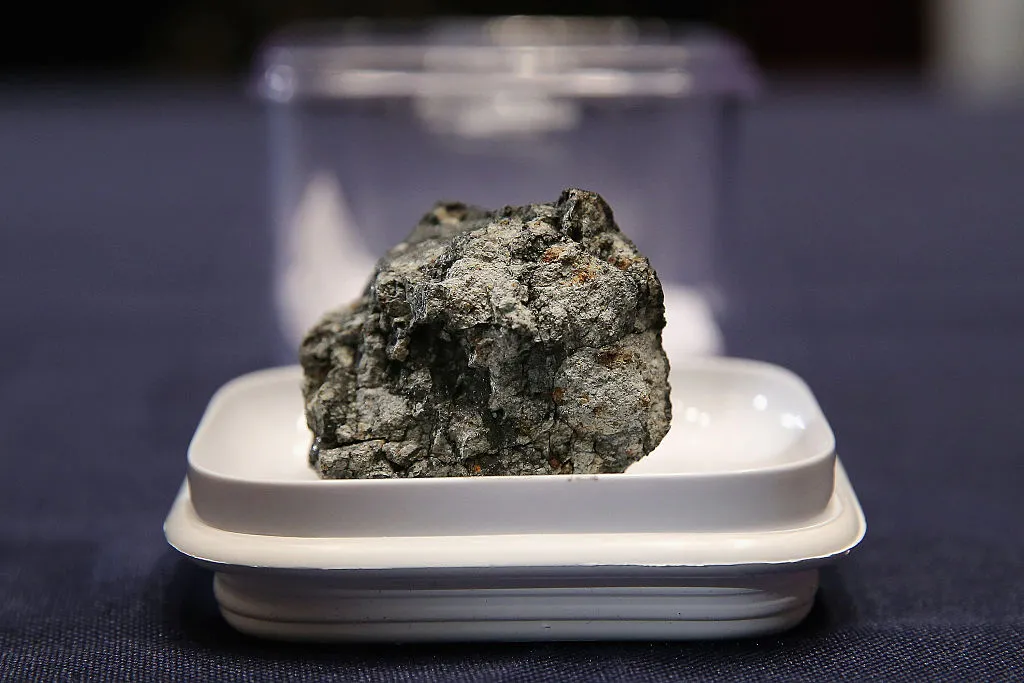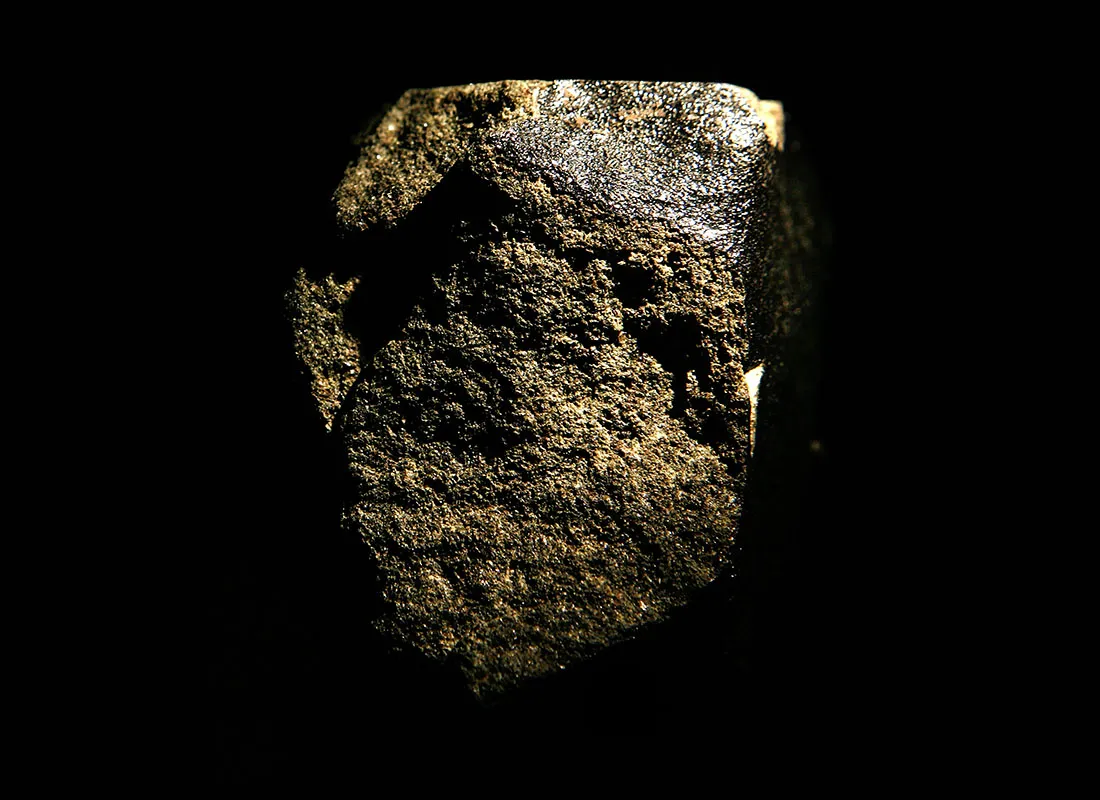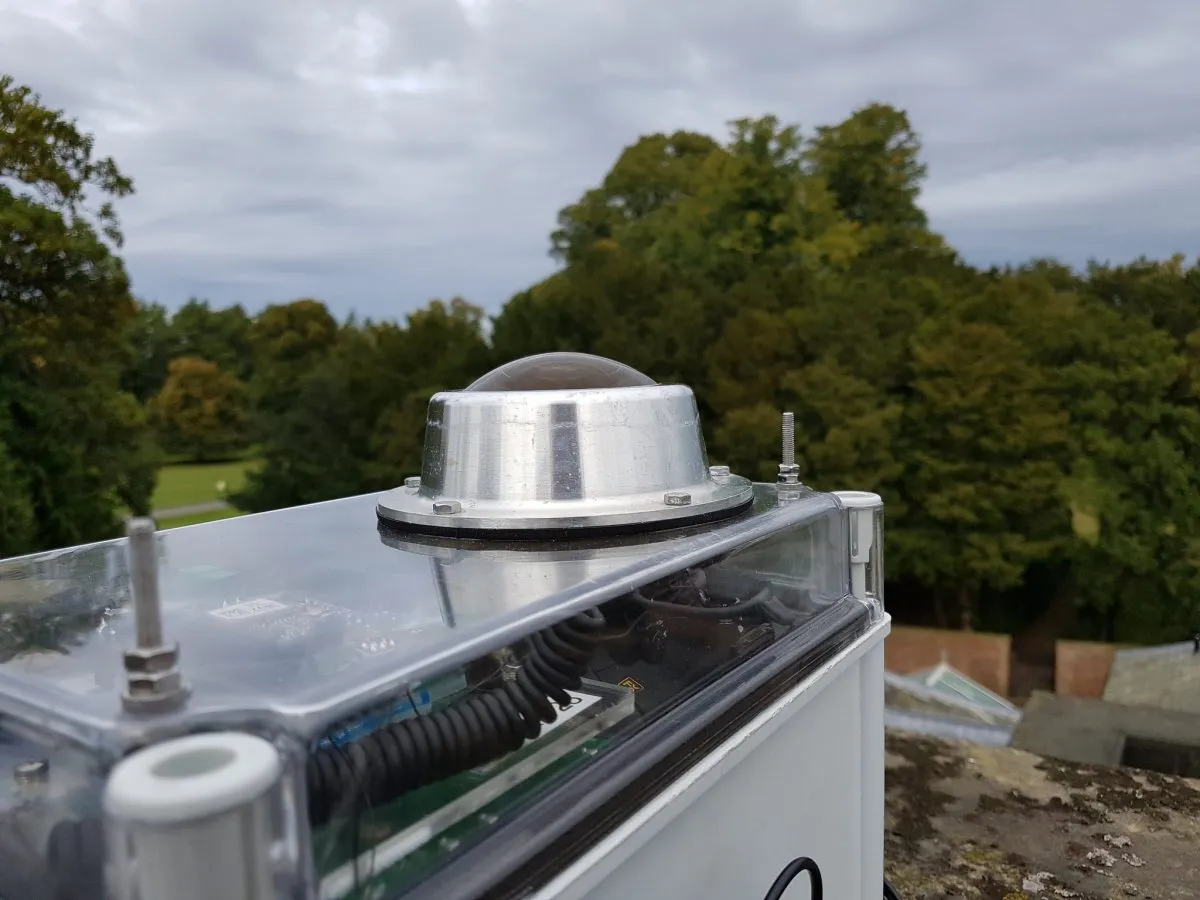We’re all fascinated by meteorites, ancient stony visitors from outer space, but what exactly are meteorites, how do they land on Earth and how can you tell if you’ve found one?
In this guide we'll reveal how to tell if that rock you found is a meteorite, where meteorites come from and what to do if you're certain you've got one.
More on meteorites


Meteorites explained
Most meteorites are fragments of material left over from the time when the Solar System was forming.
Some never got scooped up by the gravity of a newly created planet, so they’re orbiting the Sun alone.
Others ended up as part of an asteroid or in the nucleus of a comet.

Some meteorites come from other planets, dwarf planets or moons, including lunar and Martian fragments that were ejected into space following an impact.
So you can see why these objects capture our imaginations.
They offer us a chance to study the conditions of the early Solar System or the surface of another planet without having to go there.
Indeed, meteorites are still the only samples we have from Mars or some of the dwarf planets like Ceres, so they are an invaluable source of information.
Classes of meteorite
Iron meteorites

/ Getty Images
Made mostly of iron and are believed to come from the cores of protoplanets that got smashed up in a collision.
They’re very heavy; even a small sample feels unusually heavy for its size.
About 1,400 have been found and because they’re very tough, there are lots of very large examples. Indeed, there are 50 samples weighing more than a tonne.
There’s a total of 580 tonnes of iron meteorites in collections around the world.
Stony-iron meteorites

Rarer, with less than 300 ever found.
They’re made of a mix of stone and iron, and most are believed to have formed at the boundary between the core and mantle of a protoplanet that broke up in a collision.
A few may have formed in collisions between iron and rocky fragments. Externally, they look a bit like concrete, but cross-sections reveal crystals embedded in iron.
Stony meteorites

Made from rocky silicates. There are two main sub-types.
Achondrites, which are meteorites from other planets
Chondrites, which are material from the formation of the Solar System.
Chondrites often look like lumps of coal and are about as strong.
They contain chondrules, little spherical globules of material that condensed out of the pre-Solar nebula.
The rarest chondrites, carbonaceous chondrites, contain organic materials.
Although there are over 27,000 stony meteorites in collections around the world, the total mass is only 90 tonnes because they’re smaller and lighter.
How meteorites end up on Earth

How do these fragments end up on Earth?
Over millions of years, the gravity of the planets, especially Jupiter, has pushed asteroids into particular orbits, such as the asteroid belt between Mars and Jupiter.
Collisions between asteroids create large fragments, small particles and dust, some of which get nudged into new orbits that take them towards Earth, where they burn up in our atmosphere to form a meteor.
Comets that formed far beyond the orbit of Neptune can also be nudged into new orbits that bring them to the inner Solar System.
As a comet nears the Sun, its icy nucleus starts to sublimate, releasing a trail of trapped dust.
When Earth passes through this dust, these particles will also burn up in our atmosphere as meteors.
Cometary debris is responsible for most of our meteor showers.

How many meteorites?
Every year, thousands of tonnes of dust and rock hit our atmosphere.
On a clear night, meteor scientists in the UK record on average 1,000 meteors, with as many as 15,000 during a meteor shower.
Most meteors are smaller than a grain of sand and travel very fast – between 50,000km/h and 300,000km/h (30,000–185,000mph) – so are usually completely burned up in the atmosphere.
But if the lump of rock is big enough, some of it will survive and make it to the ground – a meteorite.

Typically more than 99% of the mass will be lost during flight, and objects weighing less than a few tens of grams are ablated completely.
So a meteorite surviving to the ground is far more likely to be asteroidal rather than cometary.
You might be surprised to learn that as many as 10,000–20,000 meteorites reach ground level every year across the whole of Earth’s surface.
We might expect, then, one or two to fall on the UK per year. Since 2020 there have been six organised meteorite hunts in the UK, of which one was successful.

Tracking meteors
This is why tracking fireballs with camera networks is so important. These cameras monitor the sky all night, every night.
We can then combine their observations to find the meteor’s location and velocity, often to within a few metres.
This lets us do ‘dark-flight modelling’, where information about the weather and wind is used to work out the meteor’s path after it cooled and faded from view.
From this, the ‘fall zone’ can be calculated, which is where the meteorite might be on the ground. An official search can then be carried out.

It’s important to be aware, however, that if you saw a fireball and then found an interesting rock in the vicinity, it almost certainly isn’t a meteorite.
Meteors are very high – at least 35km (20 miles) above ground level – and moving very fast, so a meteorite that survives burning up will continue to travel 50–200km (30–125 miles) from where it was last seen before landing.
Another thing to note is that most meteorites are small, usually the size of a pebble or small stone.
Because of this, they don’t create impact craters and are usually found just resting on the ground.

How to tell if you've got a meteorite
Here are a few things to look for that will help you separate meteorites from meteor-wrongs.
Meteorites are usually black or brown, with a smooth, rounded surface, a bit like a piece of charcoal or smokeless coal.
They often, but not always, feel heavy for their size, although this is also true for some terrestrial rocks like hematite and magnetite.
Most meteorites also have a thin, glossy, fusion crust, which may be broken in places and may have dimples called regmaglypts.
These look as if someone has pressed their thumbs lightly into them.

Finally, the inside might appear lighter than the outside.
Meteorites never contain holes or have a porous or bubbly appearance, and they never have features that look like they’ve flowed.
These indicate volcanic pumice, concrete or foundry slag.
Meteorites are also never reddish in colour, which indicates iron-rich rocks like hematite and magnetite, and they never have stripes or veins of crystals, which are features of terrestrial metamorphic rocks or granites.
They also never contain quartz or calcite, which come from limestone and granite and aren’t found in space.
And of course they never, ever contain fossils!

One useful test to see if you've got a meteorite is the ‘streak test’.
Rub a corner of the sample across the unglazed back of a ceramic tile. If it leaves a coloured streak, it’s not a meteorite.
However, some terrestrial rocks such as granite don’t leave marks either, so the absence of a streak does not confirm that you have a meteorite.
One thing you shouldn’t do is test the rock with a magnet.
There are many magnetic terrestrial rocks, so this isn’t a good test, but more importantly, if it is a meteorite, the magnet will damage its delicate internal magnetic structure.

So you've got a meteorite. What next?
If after going through these tests you feel sure that you’ve found a meteorite, you should send photos of your discovery or take it to your nearest geology or natural history museum for proper identification.
Here they can carry out chemical and spectroscopic analysis, looking for specific markers of an extraterrestrial origin, such as isotopes that are not present on Earth and the relative abundances of silica, iron and magnesium oxides and other minerals.
For example, stony meteorites always have around 40% silica and 55% iron and magnesium oxides, which is very different to most terrestrial rocks.
To help them with that assessment, here’s what you should do.
Take a photo of the meteorite where you found it

Ideally before moving it, so you have a record of what it looked like on the ground.
If your camera supports geotagging, switch this on so you can get a precise location. Otherwise, use a mapping app to get the location accurately.
This is a really important step for the identification of the meteorite and can be linked to reported meteor sightings.
Handle the meteorite as little as possible

to avoid contamination. Photo by LOU BENOIST/AFP via Getty Images
The ideal way to collect it is using a clean, inside-out sandwich bag as a glove.
Pick up the object, then turn the bag the right way out again with the object inside. Seal it and put it inside a second bag.
This avoids contamination and keeps air and moisture out.
Some meteorites are extremely fragile and can be permanently altered by water, so it’s vital that you keep it dry.
If you don’t have a sandwich bag, aluminium foil can be used instead.
Weigh, measure and photo it

Carefully tip out the sample onto a clean piece of foil on kitchen scales to weigh it then place a ruler next to it and take photographs from several angles.
Make sure that the photos are in focus and include the ruler!
Bag it up
Keep the meteorite safe and send the photos and an explanation of where, how and when you found it to your nearest museum.
Good luck and happy meteorite hunting!
If you do find a meteorite, we'd love to hear from you! Get in touch via contactus@skyatnightmagazine.com
This guide appeared in the February 2025 issue of BBC Sky at Night Magazine
